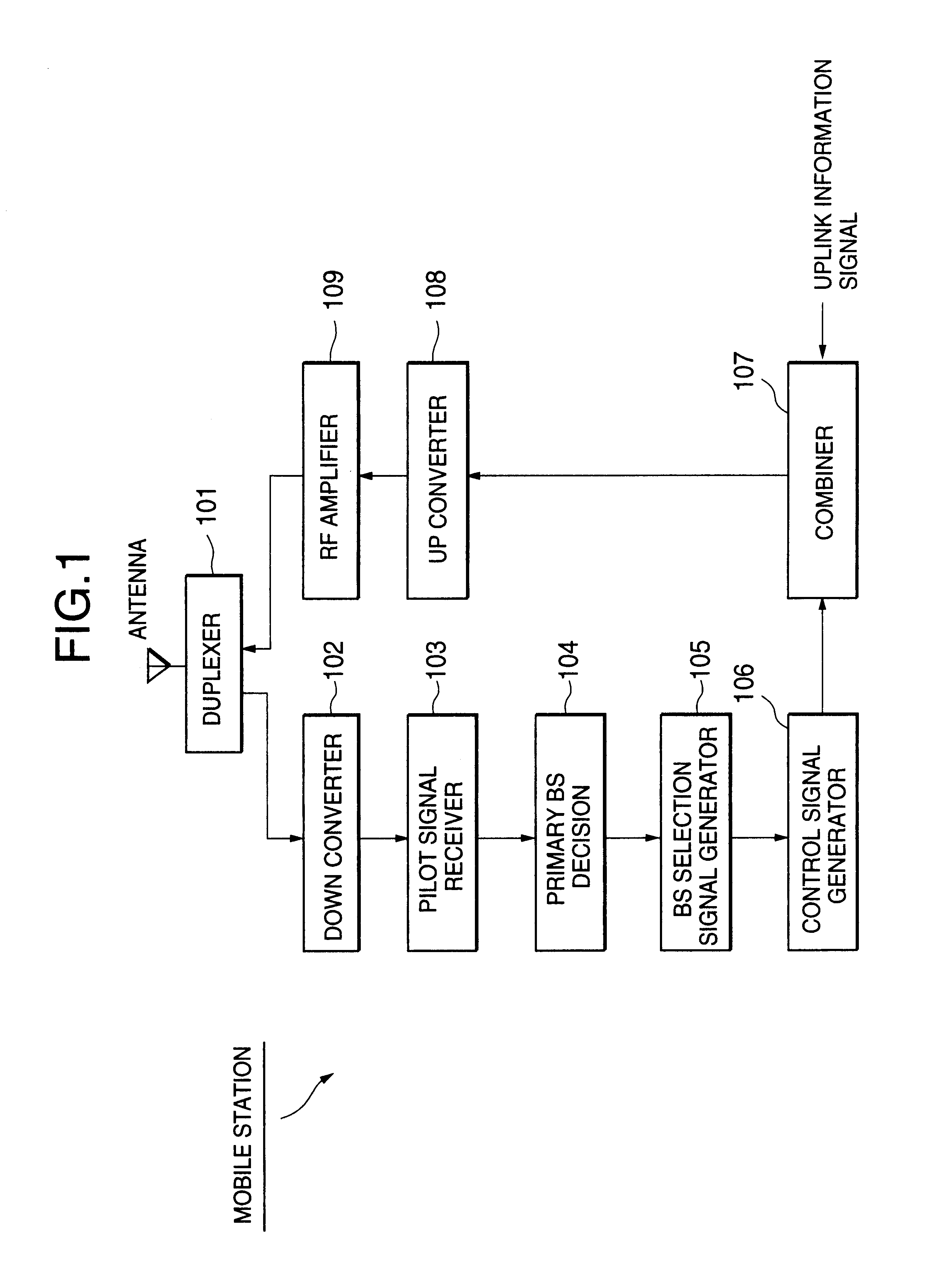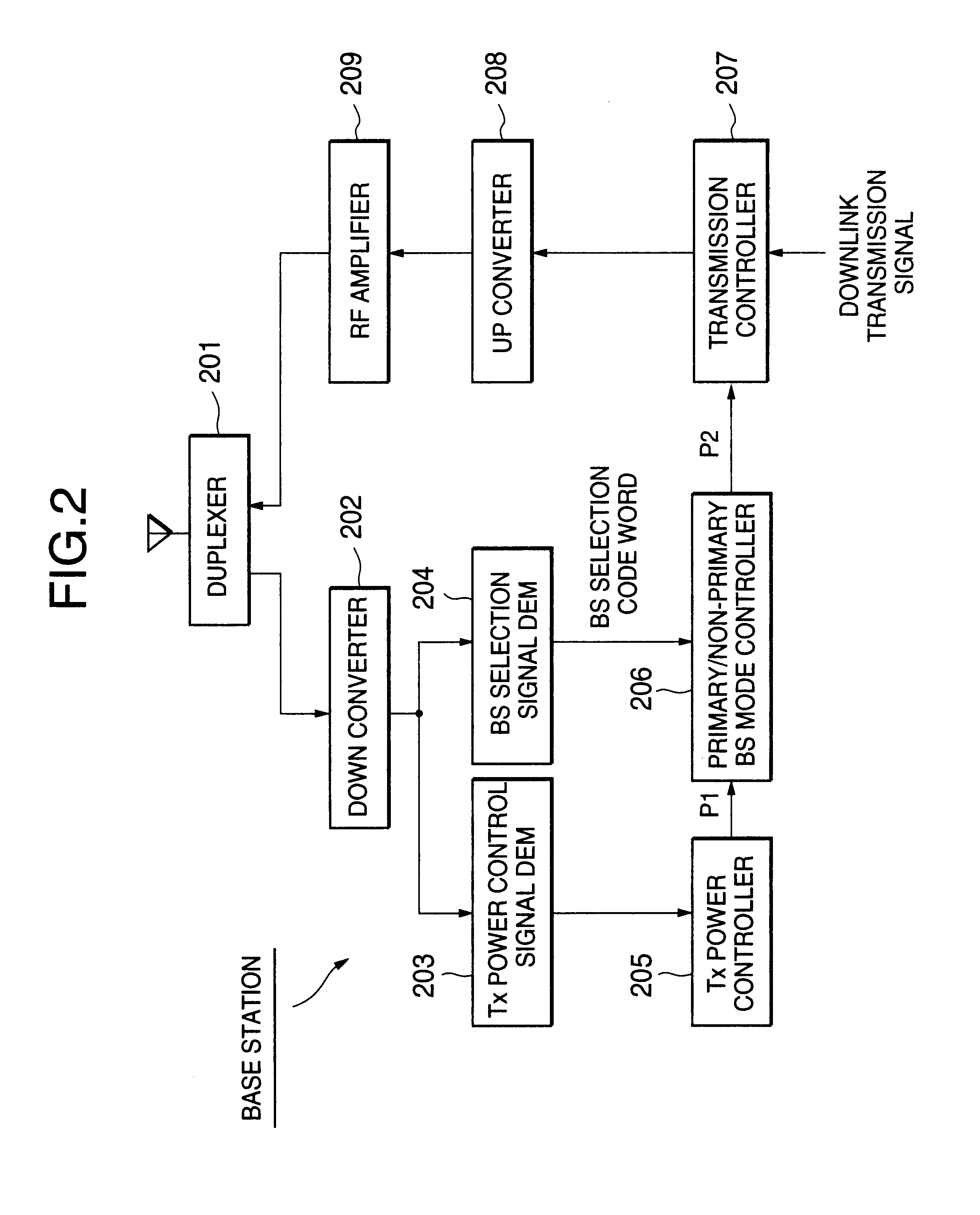Transmission power control method and system
a power control and transmission technology, applied in power management, wireless communication, site diversity, etc., can solve the problems of loss of downlink signal, substantial interference at adjacent cells, and reduced reliability of base station selection control
- Summary
- Abstract
- Description
- Claims
- Application Information
AI Technical Summary
Benefits of technology
Problems solved by technology
Method used
Image
Examples
first embodiment
Referring to FIG. 6, a first embodiment of the present invention controls the transmission power taking into consideration the amount of loss of a base station selection signal or code word.
More specifically, the primary / non-primary base station mode controller 206 inputs the base station selection code word from the base station selection signal demodulator 204 (step S601) and measures the amount of loss of the base station selection code word (step S602). The amount of loss of the base station selection code word may be the number of punctured bits as shown in FIG. 3C or the ratio of the number of punctured bits to the number of all bits of the base station selection code word. Hereafter, the amount of loss of the base station selection code word is denoted by LCW.
Subsequently, it is determined whether the amount of loss of the base station selection code word, LCW, is greater than a threshold LTM (step S603). The threshold LTH may vary depending on the length of the base station ...
second embodiment
Referring to FIG. 7, a second embodiment of the present invention controls the BS mode update timing so that synchronization among the primary / non-primary mode update timings of base stations is achieved.
More specifically, the primary / non-primary base station mode controller 206 inputs the base station selection code word from the base station selection signal demodulator 204 (step S701) and detects the base station identification number BS_IDRSV from the base station selection code word E-002 (step S702). Then, variable i is set to the number of a current slot and variable j is set to the number of a slot conveying the last part of the base station selection code word (step S703). Thereafter, it is determined whether the following equation (1) is satisfied (step S704):
i−(j+Tos)mode Fn (1)
where Tos is waiting time for mode update. Fn is the number of slots included in one frame, and X mod Y is an operator whose result is the remainder of a division operation (X / Y). In other words...
third embodiment
Referring to FIG. 9, a third embodiment of the present invention is a combination of the first and second embodiments. Steps S901-S905 are the same as the steps S701-S705 of FIG. 7, respectively. If the base station identification number BS_IDRSV is identical to the own identification number ID (YES at step S903), then it is determined whether the amount of loss of the base station selection code word, LCW, is greater than a threshold LTH (step S906).
If LCW>LTH (YES at step S906), then it is determined that the demodulated base station selection code word is not sufficiently reliable and the final controlled transmission power value P2 is set to the interim controlled transmission power value P1 inputted from the transmission power controller 205, that is, P2=P1 (primary base station mode), (step S604). In other words, the transmission power is not suppressed regardless of whether the base station itself is the primary base station or not.
If LCW is equal to or lower than LTH (NO at ...
PUM
 Login to View More
Login to View More Abstract
Description
Claims
Application Information
 Login to View More
Login to View More - R&D
- Intellectual Property
- Life Sciences
- Materials
- Tech Scout
- Unparalleled Data Quality
- Higher Quality Content
- 60% Fewer Hallucinations
Browse by: Latest US Patents, China's latest patents, Technical Efficacy Thesaurus, Application Domain, Technology Topic, Popular Technical Reports.
© 2025 PatSnap. All rights reserved.Legal|Privacy policy|Modern Slavery Act Transparency Statement|Sitemap|About US| Contact US: help@patsnap.com



